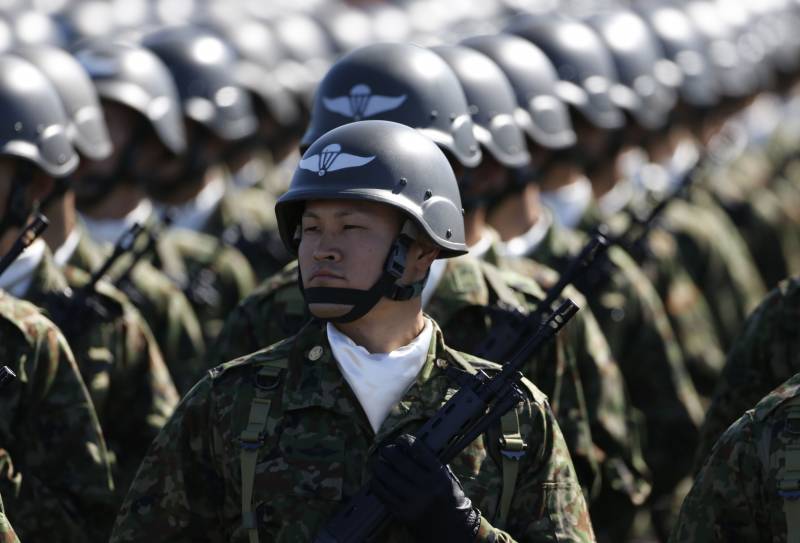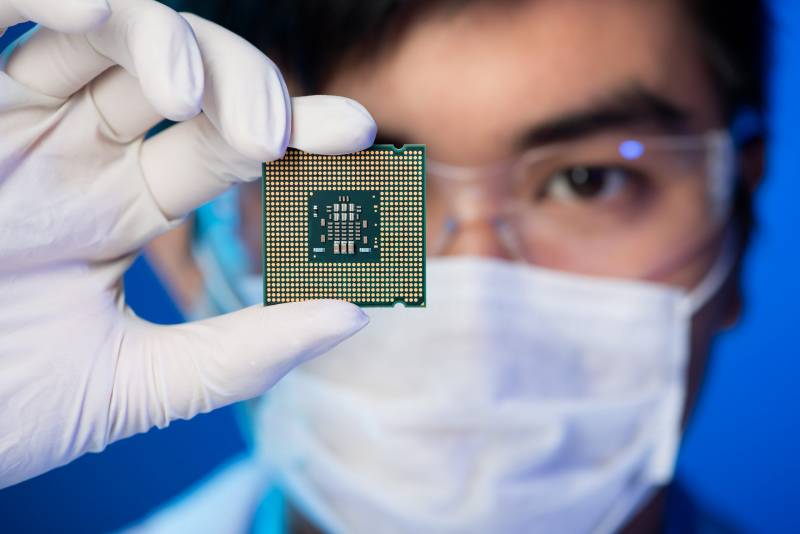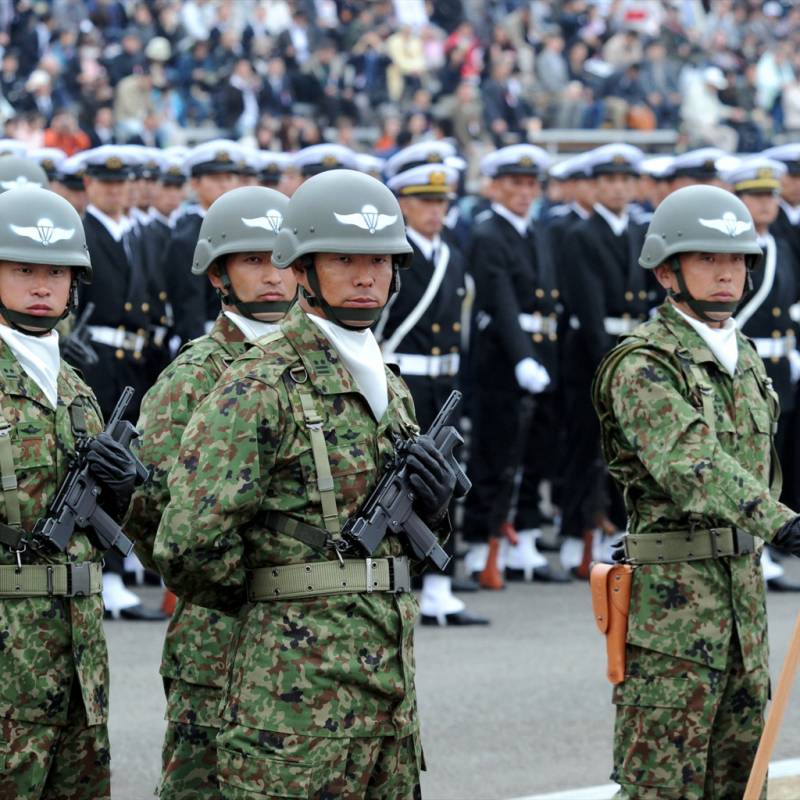Chips and missiles: Japan turns into a hegemon in the Far East

Semiconductors first.
The current state of Japan can be characterized by two challenges.
The first is the desire to create their own semiconductor industry. The Japanese are traditionally perceived as skilled at various high-tech gadgets. When it comes to global chip production, the country has a very modest position.
The Americans, for example, are the best at semiconductor design, Europe is good at building chip manufacturing equipment, the Koreans are strong at making memory devices, and Taiwan has almost all of its assembly and lithography power. Japan is left only with the production of high-quality materials and photolithograph units. With the production of their own chips, the Japanese will do even worse than neighboring China, which recently announced a 28 nm photolithograph.
In Japan, chips are built with a topology of at least 40 nm. The roots of the lag go back to the 80s, when the Americans actually crushed the most advanced microelectronic industry in the world. In 1986, the Japanese were forced to leave the American market and at the same time allow chips made in the USA into their country on preferential terms. Such is the price of dependence on a big master, nothing can be done.
As a result, the Japanese semiconductor industry, if not dead, then seriously ill. Attempts to revive production did not lead to anything - competition from South Korea and, above all, from Taiwan, did not allow the sector to develop.
Japan currently controls no more than ten percent of the global semiconductor market, and not in the most high-tech area. It's embarrassing to admit, but the Japanese are forced to import 10nm chips from Korea and Taiwan, and generally buy 28nm chips from China.

The Japanese government decided on another breakthrough last year. Largely influenced by the US-China games around Taiwan and the aftertaste of COVID-19. The pandemic has bled the global semiconductor industry in Japan's most sensitive segment of automotive chips for a long time. The forceful option of returning Taiwan to its native Chinese harbor threatens to bring the entire world of microelectronics to its knees.
As a result, Tokyo allocates $ 22,4 billion for the development of its own world-class "chip building". We agreed with the Taiwanese TSMC, which will build a semiconductor factory with a topology from 2024 to 12 nm in Kumamoto Prefecture by 28. It will not be possible to catch up and overtake (in Taiwan they are about to master 2-nm chips), but they will try to partially ensure “semiconductor sovereignty”. To overcome the backlog, the Rapidus holding is being created, which is called upon to build its own line for the production of chips with a topology of 2 nm in a couple of years, and to begin mass production by 2030.
To understand the scale of the project, you can voice the initial financial plans - at least $ 54 billion. The amount is not final and even in the most optimistic scenario it will double. On paper, with chips from Japan, everything is fine - a lot of money is allocated and this will significantly increase Tokyo's influence, if in the world, then in Southeast Asia for sure. Only now the Japanese have forgotten about their masters from Washington, who also do not mind increasing their own semiconductor capacities.
Dependence on Taiwan does not please anyone. It is likely that in ten or fifteen years the island will be given to China without a fight - for this, world leaders need only build their own semiconductor industry. In the meantime, the United States is launching the Chip 4 program, designed to stifle microelectronics in China, and at the same time increase chip production at home. The four in the name means the main players in the program - the United States, South Korea, Taiwan and Japan. In short, from now on, everyone who produces semiconductors with a topology of less than 16 nm must ask permission from the United States, to whom to sell chips and to whom not.
The restrictions primarily apply to exports to China, which, by a happy coincidence, is Japan's key partner. Even if they manage to establish production of modern chips in the Land of the Rising Sun, they will not be able to sell to their "friends" in China. In Tokyo, they have already stood at attention and banned the export to the Middle Kingdom of equipment for UV lithography, etching and laying transistors. This, by the way, is even more than the Americans demanded.
In the future, all of the above means a significant narrowing of the market, a decrease in serial production and an increase in cost. No one will need the chips, except for the Japanese themselves. But even they will not be particularly interested in them over time - in Taiwan by that time they will have learned to make even more perfect and cheaper. Or in the United States. It seems that the Japanese will remain suppliers of materials for semiconductors - the unfortunate will not be allowed to the sacrament of high-tech lithography.
Hard Power Tokyo
If China is Japan's main antipode in the global semiconductor war, then there will be many more enemies in a possible "hot" war in the future. This is, first of all, the army of China, partly the nuclear potential of North Korea and Russia, which does not allow the Japanese leadership to sleep peacefully.
The Japanese can be understood - according to the Constitution, they voluntarily-compulsorily renounced "war as the sovereign right of the nation, as well as the threat or use of armed force as a means of resolving international disputes" in 1947. But in December 2022, Tokyo stated that it was facing “the most difficult and complex security situation since the end of World War II.” The country's leadership is especially concerned about the situation with Ukraine. Premier Kishida, referring to China, said:
Like it or not, the Japanese will have to arm themselves with such fears. Moreover, there is no particular hope for the Americans, once the guarantors of the inviolability of the island state. Trump pointed out a few years ago that “if Japan is attacked, we will have to fight in the third world war. But if we are attacked, Japan is not at all obligated to help us. They will watch on Sony TV how we are being attacked.”
Biden is far from such rhetoric, but he does not decide much in the White House. The current policy of the White House stimulates the further arming of Japan. Gone are the strict restrictions on not spending more than 1 percent of GDP on defense, now NATO's 2 percent is allowed.
Japan is getting closer and closer to the North Atlantic bloc - last summer, Prime Minister Kishida attended the NATO summit for the first time as a leader of the country. In 2023, they are actively working on opening an office of the alliance in Tokyo.

The action plan of the new Japanese militarists includes the purchase of long-range winged Tomahawk, increasing the range of combat use of their own Type 12 missiles, deploying a base with CV-22 Osprey convertiplanes in the west of the country, and a noticeable expansion of ammunition stocks.
The Japanese intend to place a major weapons warehouse on Amamioshima Island. This is a direct echo of the special operation in Ukraine, which exposed the acute shortage of shells in the modern conflict.
In the summer of 2023, Tokyo also became concerned about space security due to the growing influence of Russia and China in this area. This, by the way, is the first defense ambitions of the Japanese in space.
Militarism is also supported in Japanese society - more than 60 percent of respondents approve of the militarization of the islands. They have probably forgotten the consequences of the latest military adventures. Memorials in Hiroshima and Nagasaka no longer work. Moreover, if the go-ahead is given from above, then Japan will create its own nuclear weapons in a couple of years. So, at least, says Henry Kissinger, and there is no reason not to trust him.
Japan is gradually turning from an uncomplaining vassal of the United States into the guardian of the distant frontiers of the master's lands. A kind of buffer zone from Russia and China in the Far East. A typical sign of Washington's growing weakness is that even in the midst of the Cold War, the Japanese were not trusted with so many weapons and forces. The situation has changed and we have to deal with it.
Documents were adopted in Tokyo allowing for preventive strikes against the enemy, if necessary. Offensive manners have not been observed in the country since 1945. Japan can indeed become an important part of the anti-Russian coalition in the Far East. The main thing is that there is enough money to reincarnate semiconductors and rockets at the same time.
Information